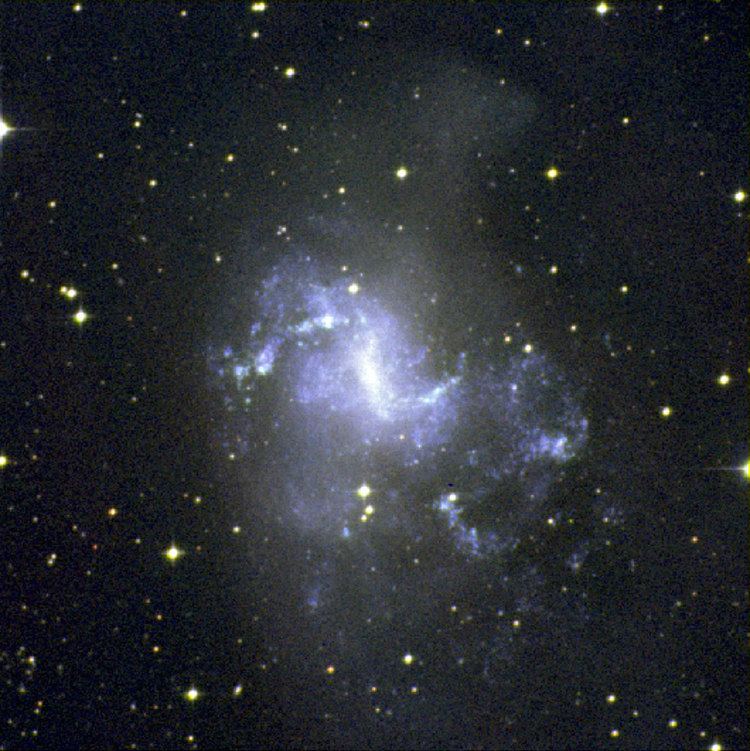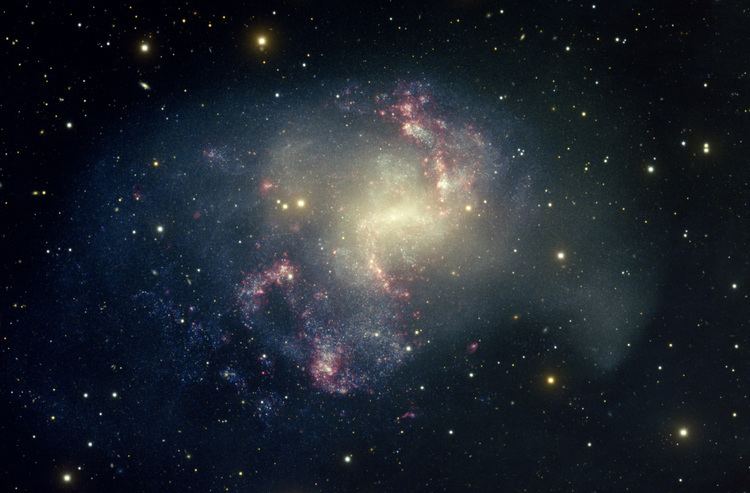Right ascension 03 18 15.4 Distance 12.886 Mly Constellation Reticulum | Declination −66° 29′ 50″ Apparent size (V) 9.1 x 7.1 arcmin | |
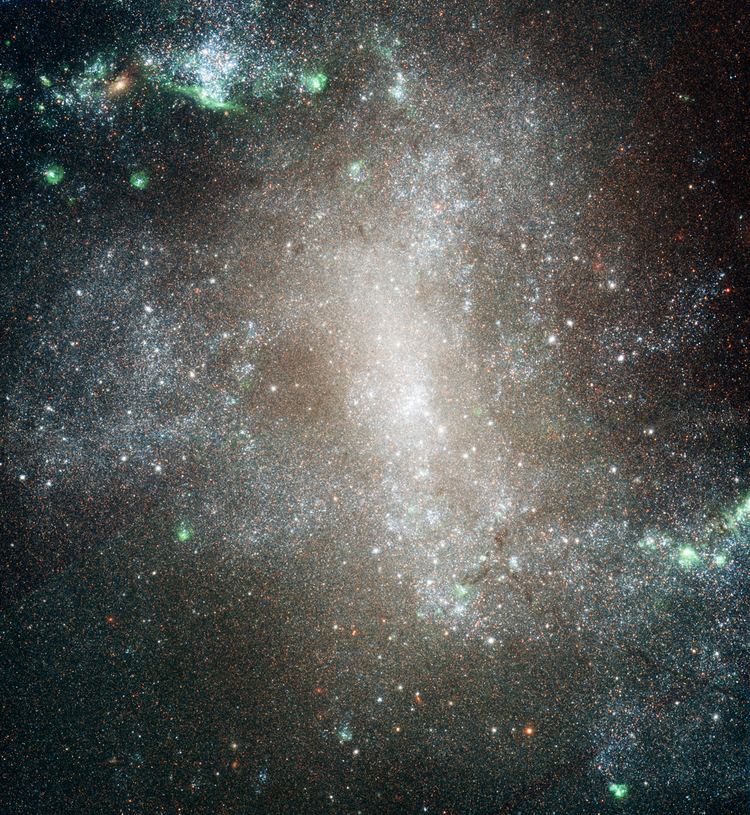 | ||
Similar NGC 1316, NGC 1291, NGC 1232, Holmberg IX, NGC 1365 | ||
NGC 1313 (also known as the Topsy Turvy Galaxy) is a field galaxy and a barred spiral galaxy discovered by the Scottish astronomer James Dunlop on 27 September 1826. It has a diameter of about 50,000 light-years, or one-third the size of the Milky Way.
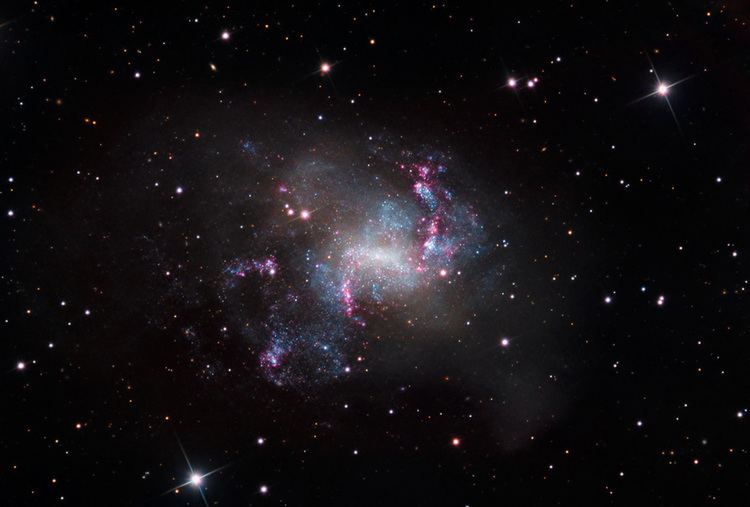
Features
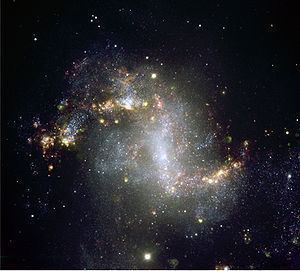
NGC 1313 has a strikingly uneven shape and its axis of rotation is not exactly in its centre. NGC 1313 also shows strong starburst activity and associated supershells. NGC 1313 is dominated by scattered patches of intense star formation, which gives the galaxy a rather ragged appearance. The uneven shape, the ragged appearance and the strong starburst can all be explained by a galactic collision in the past. However, NGC 1313 seems to be an isolated galaxy and has no direct neighbours. Therefore, it is not clear whether it has swallowed a small companion in its past.
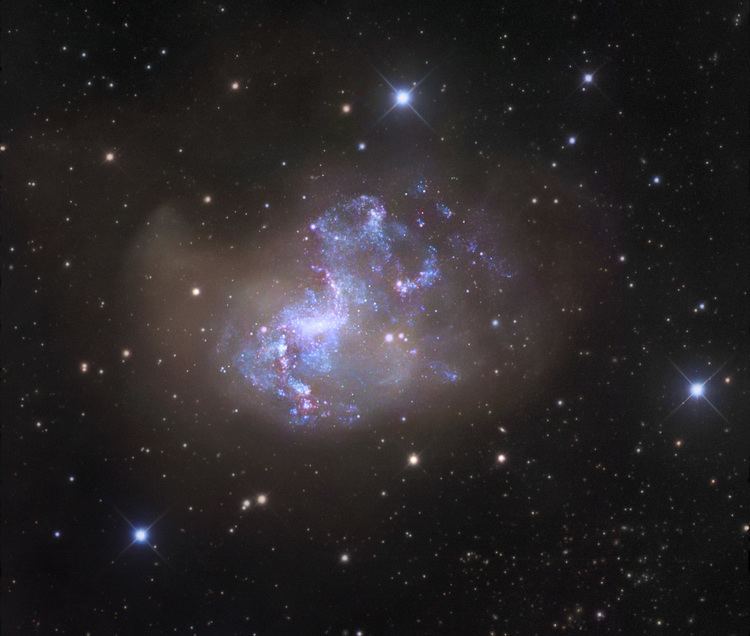
Observations has shown that young, blue stars are scattered across the galaxy. This is evidence of infant mortality in which the young open clusters quickly became gravitationally "unglued" and scattered their resident stars into the galaxy. The galaxy bears some resemblance to the Magellanic Clouds and hosts two ultraluminous X-ray sources, called NGC 1313 X-1 and X-2. The former is a rare intermediate-mass black hole.
